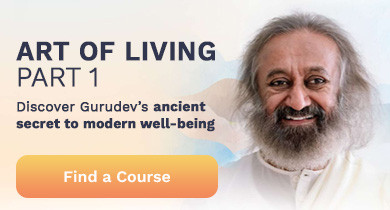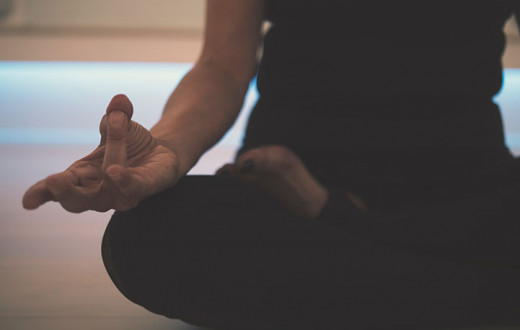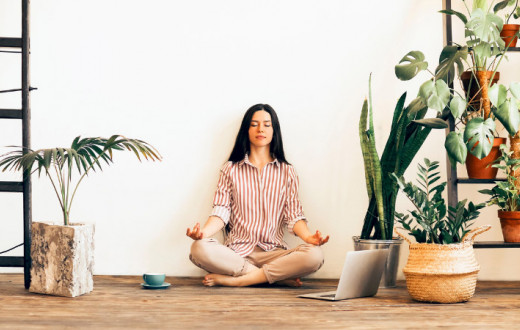
Before you decide that you cannot meditate, we have all the tips you need to overcome whatever meditation challenges you are struggling with. Too many thoughts, not enough time, a noisy environment, and not getting results are just a few of the obstacles we will tackle here. Let’s dive in and restart your meditation journey with the solutions you need and will support you.
Building a strong meditation foundation

Let’s face it: without a strong foundation, you’re not likely to succeed. Commitment and a strong intention to follow through need to be cultivated to ensure a strong foundation. Otherwise, poking it with a stick will only result in seeing your meditation aspirations crumble before you reap any benefits.
Establishing a regular meditation practice
Start with a consistent schedule and commit to practicing meditation daily. One of the easiest ways to do this is to set a goal, like 40 days straight. But do not be hard on yourself if you miss a day. Just restart the counter and keep going.
You may want to begin with short sessions and gradually increase the duration as you become more comfortable with the practice. Some techniques come with a specific time to practice and are actually easier to do than silent meditation for five to ten minutes. For example, some mantra-based techniques suggest meditating for twenty minutes twice a day, and some breath-based meditation techniques start at ten minutes.
Find a quiet and comfortable space for meditation, free from distractions. You can add some fun to your meditation practice by creating a designated space for meditation and decorating it.
Experiment with different meditation techniques to find what works best for you. In other words, don't be afraid to try something new if you don’t find enough depth or benefits. At the same time, stay with a technique for some time before you decide it isn’t for you, as some techniques take a little time to notice benefits.
Make meditation a habit by incorporating it into your daily life. Scheduling is everything these days. You might need to wake up a half-hour early, meditate during your lunch break, or wait until your kids are in bed—just make sure you find a time that works for you regularly.
Choosing the right meditation technique

In the beginning, explore various meditation techniques, such as mantra meditation, breath-based meditation, mindfulness meditation, guided meditations, silent meditation, and walking meditation. You may find that incorporating more than one technique into your daily practice will give you all the benefits you want. Many people start by using guided meditations and apps.
Choose techniques that resonate with you and your goals, such as:
Reduced stress and anxiety
Improved focus
Better sleep
Improved mental health
Improved physical health
Be patient and try different techniques until you find what works best for you. Researching which techniques have scientific backing can also be helpful.
Tips for overcoming common meditation challenges

Scheduling issues
There’s a common saying, "You should sit in meditation for twenty minutes a day unless you're too busy, in which case you should sit for an hour." Everyone is busy these days, and finding time to meditate can feel like adding one more thing to your to-do list. However, the benefits of meditation far outweigh the time spent meditating and not actively working on said list. For example, improved focus often results in improved efficiency. And the deep rest from an afternoon meditation recharges you in ways that cat naps and caffeine cannot. If meditating is important to you, find a way to make it happen. You will be glad you did!
Managing a wandering mind
It’s important to recognize that mind wandering is a normal part of the meditation process. Thoughts are also part of the meditation process. When you become aware that your mind is wandering, gently bring your attention back to the breath or your mantra. Using your breath or a mantra is the vehicle for the inward stroke of meditation. Thoughts are often the result of the outward stroke of meditation.
Thoughts are perfectly okay as long as you’re not getting caught up in entertaining yourself with daydreams or planning or working on your to-do list.
If you are having trouble meditating and repeatedly get caught up in a train of thoughts, there are a few things you can do.
Go for a nature walk or do some yoga prior to sitting for meditation
Spend a few minutes prior to meditation to plan or check in with your to-do list
Before meditation, shake your hands for a few seconds
Try breathing exercises before your meditation
Try a different time of day to meditate
Just remember to practice patience and self-compassion when dealing with mind wanderings, relax, and let go!
Handling distractions

Too much noise is a common distraction. Other kinds of distractions include kids, pets, phones, and clutter. Here are some tips you can try.
Wear noise-cancelling headphones
Meditate while others are still sleeping
Crate your pet
Close the door to the room you are meditating in (maybe add a “meditating” sign)
Mute your phone
Keep your meditation space tidy and separate from your ‘work’ space
Working with physical and emotional discomfort
Some physical sensations and emotions during meditation could be a natural release of stress, while others are easily managed by trying the following suggestions.
Practice yoga prior to meditation
Make sure you choose a meditation position that has back support
Don’t be afraid to adjust your position or stretch out your legs if need be
Accept physical sensations without judgment
Relax and bring your attention to the sensations and your breath
Practice self-compassion and kindness when dealing with emotional discomfort
Explore different meditation techniques, such as a body scan or loving-kindness meditation, to help manage discomfort
Note: If pain or strong emotions persist, seek the advice of your healthcare provider.
Deepening your meditation practice

Beyond staying consistent with your meditation practice, here are some meditation technique ‘super-chargers’ you can use.
Incorporate physical postures, such as yoga or tai chi, to enhance meditation practice
Practice simple breathwork before you sit for meditation
Explore advanced techniques taught in Silent Retreats
Practice meditation in a group setting (the bigger, the better)
Seek guidance from experienced meditation teachers
Find a meditation community or buddy to support and encourage your practice
Staying motivated

Another common meditation challenge is staying motivated. One reason you may be feeling unmotivated is that the meditation technique may not meet your expectations. But as long as you have reasonable expectations, sorry, no overnight enlightenment, there are ways to increase and maintain your motivation.
Identify your common obstacles and use the tips shared here
Set realistic goals and celebrate small victories to stay motivated
Prioritize self-care and make time for meditation in your daily routine
Be patient and kind to yourself, and remember that meditation is a journey, not a destination
If you aren’t making progress after a few months, consider changing techniques
Start journaling to track your progress
The technique that helps you rise above challenges

From day one, SKY Breath Meditation greatly reduces stress and sets you on a path of deeper meditations with significant results. It’s much easier to stay motivated when you’re getting the results you want. Here are some of the results researchers have found, and SKY practitioners report:
Significant decrease in clinical/non-clinical anxiety
Significant decrease in clinical.non-clinical depression
Greater mental focus
Healthier blood pressure
Enhanced deep sleep
Reduced addictive behaviors
Increased self-esteem, optimism, and joy
You can learn SKY by registering for the Art of Living Part 1 course. Bonus: Certified teachers are there to support your journey, and there are weekly follow-ups online and in person.
Related articles

The Ultimate Guide to Meditation for Beginners by The Art of Living
Meditation Definition, Benefits, and Tips to Calm Your Mind
Meditation Retreats Near Me: Find the Best with Our Guide Today
Reduce the Risk of Burnout with Meditation at Work
When is the Best Time to Meditate? Morning, Noon, Or?
A Beginner’s Guide to Daily Meditation
Meditation for Beginners Simplified: Sit Back, Close Your Eyes, Relax!
Meditation for Beginners: Let’s Close the Eyes
Meditation with Music: A Guide to Reduced Stress and More Calm
Meditation for Seniors: The Zen Time of Your Life Starts Now
How to Keep Your Mind Healthy: 5 Types of Meditation To Try
What Is Meditation? 12 Ways It Can Help You and How to Begin
Try Our 10-Minute Meditation for When Time Is of The Essence
Learn the Art of Mindful Eating for a Happier Mind and Body
Meditation is the Key to Investing in Your Mental Health
Morning Meditation to Start Your Day the Right Way
Escape the Chaos: Start Your Day with This Peace of Mind Meditation
5 Tips for How to Deal with Anger
The First Rule of Meditation That’ll Help You Meditate Like an Expert
Why Meditate: 25 Signs For You to Start Meditating Everyday
Meditation for Grief: Breathe In Love, Breathe Out Grief
Achieve Forgiveness Through Meditation
Meditation for A Healthy Body Image: How You Can Start
Incense for Meditation: Benefits, Best Scents, and More






























